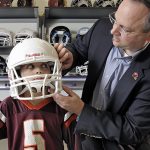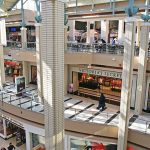 Despite all the well-documented trends supporting health & wellness, Americans became even less active in 2014, according to the 2015 Participation Report by the Physical Activity Council (PAC).
Despite all the well-documented trends supporting health & wellness, Americans became even less active in 2014, according to the 2015 Participation Report by the Physical Activity Council (PAC).
PAC found 82.7 million Americans age 6 and up, or 28.3 percent, were physically inactive last year, up 0.7 percent from 2013 when 80.2 million, or 27.6 percent, of the population were inactive.
An “inactive” person is defined as one who does not participate in any of the 104 sports/activities covered by the PAC report, which includes everything from individual and team sports to fitness machines, camping, walking and stretching.
The year marked the highest percentage of inactivity over the last six years. Researchers said that with the economy bouncing back and more extreme weather conditions in 2014, more people chose other commitments than physical activity.
Inactivity for the younger age groups flattened out in 2014 while there was a sharp increases of inactivity for those 65 and older. Ages 18 to 24 showed the most decrease, dropping 0.2 percent from 2013. Overall, inactivity seemed to increase among most ages.
“While we can look at this number in a negative light, I would like to use it as a wakeup call to not only our industry but the rest of society,” said Tom Cove, PAC chairman and the president & CEO of the Sports and Fitness Industry Association (SFIA). “The benefits of increasing activity are well documented for individuals and for the country. It’s time we put our time & resources into industry initiatives and national campaigns to increase physical activity.”
On the positive side with 292 million Americans age 6 and older, 83 million inactives leaves 209 million “actives” taking part in a wide range of activities. Moreover, the research found that those who are active seems to be participating more often and in multiple activities.
The research tracked participation in over 120 sports and found overall participation to be fluctuating over the last few years. Increases in participation were seen in racquet, team, and water sports, which was linked to those who were active in 2013 likely adding to their activities. While outdoor and fitness sports have remained flat over the past few years, individual sports continue its decline, dropping almost 1 percent over the last year.
“Gen Z,” or those born this millennium, continue to dominate the team
sports category while the Millennials and “Gen X” groups dominated fitness sports. All three generations are actively involved in outdoor sports and individual sports.
Other trends the report found:
Spending: Spending on gym membership/fees continued to increase in 2014 but overall, spending decreased or flattened out in 2014. Less money was spent on team sports, in and outside of school. Although decreased from 2013, spending on footwear, clothing, and equipment all remain high.
Pay-to-Play: Most parents who have children playing a sport in middle or high school, paid a fee so their child can participate 2014. Of these parents, almost half paid more this year than last year. Most parents pay under $150, but a significant 28 percent pay over $200 to the school.
Aspirational Sports: Most people want to try swimming for fitness, which the researchers said makes sense since it’s the most gentle exercise on muscles and bones while getting a full-body workout. Almost all age groups are interested in outdoor activities, such as camping, biking and hiking. For the older group, bird/wildlife watching is always a top interest.
In addition to the SFIA, the PAC is made up of the Snowsports Industries America (SIA), Outdoor Industry Association and Outdoor Foundation (OIA) and (OF), International Health, Racquet, and Sportsclub, Association (IHRSA), National Golf Foundation (NGF), Tennis Industry Association (TIA) and United States Tennis Association (USTA).









